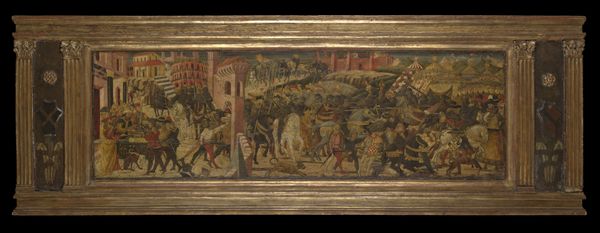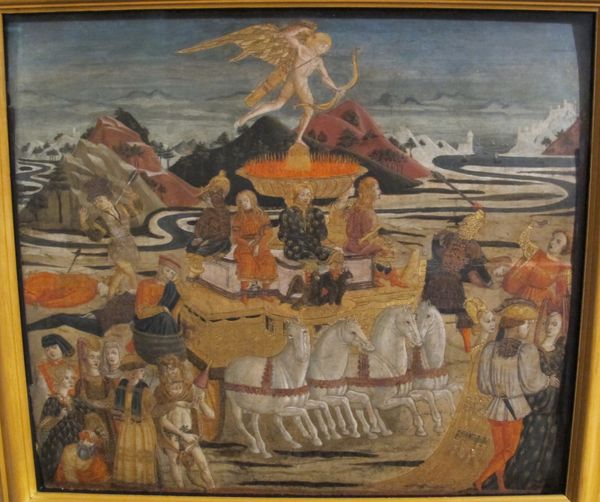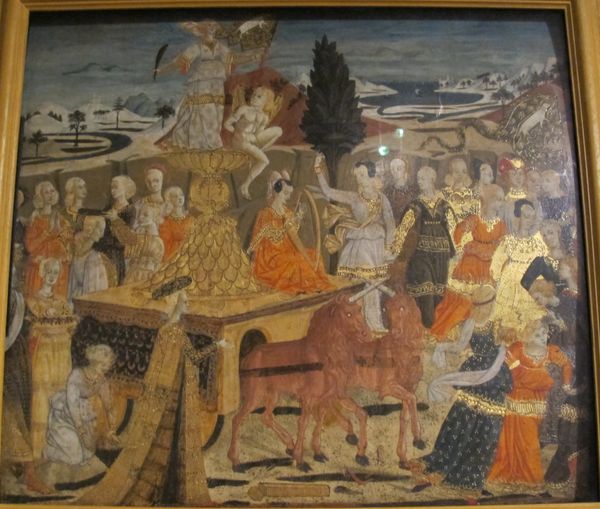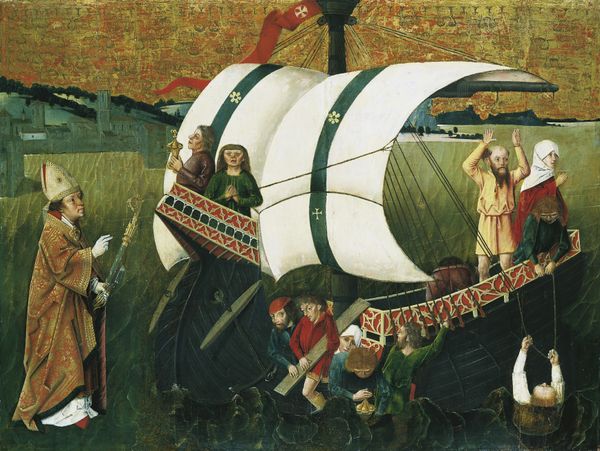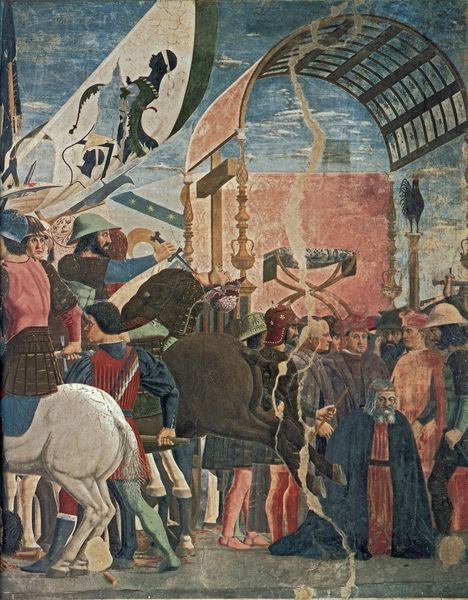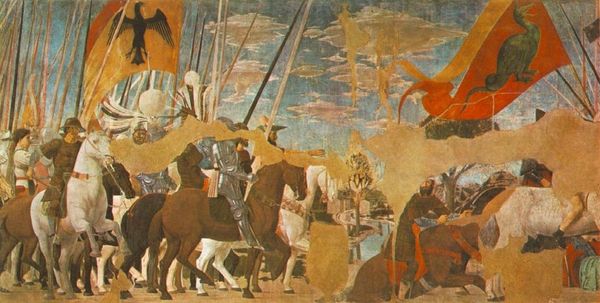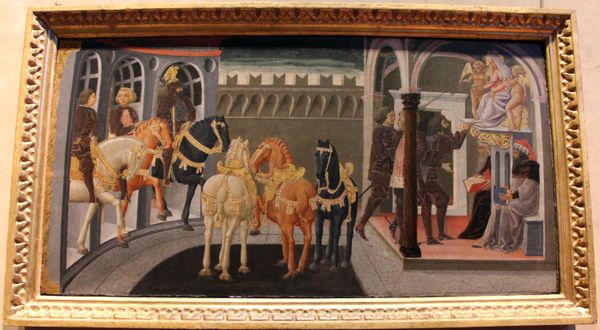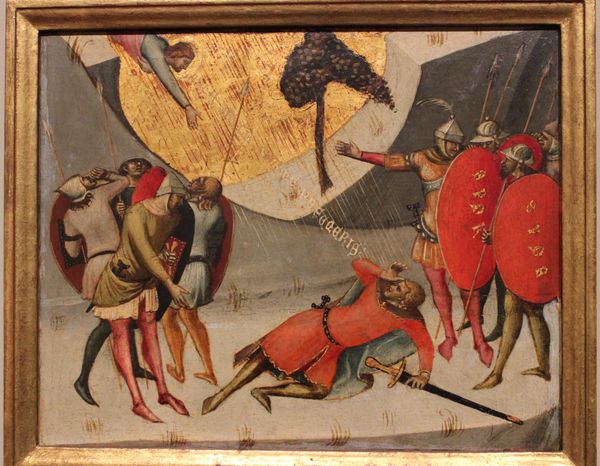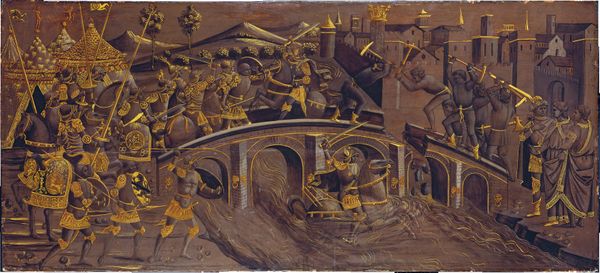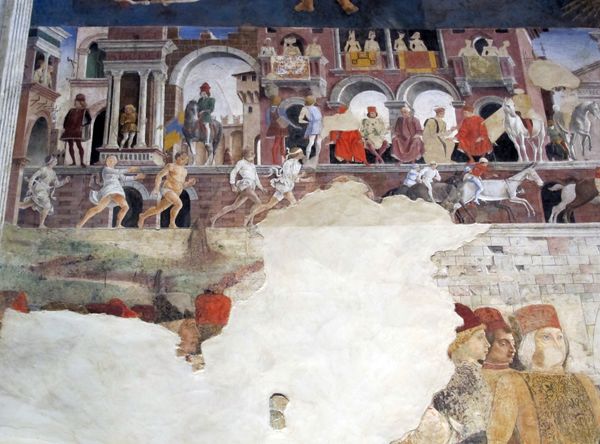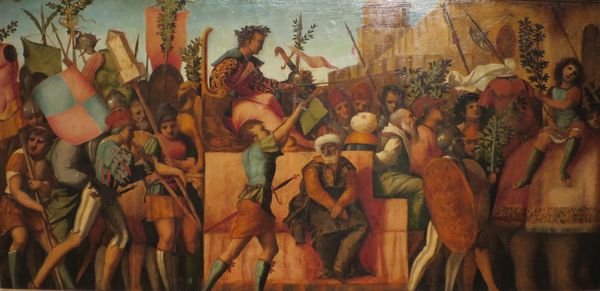
tempera, painting
#
narrative-art
#
tempera
#
painting
#
landscape
#
figuration
#
history-painting
#
italian-renaissance
Copyright: Public domain
Curator: Well, look at this captivating panel painting! It's titled "The Triumphal Return of Scipio Africanus to Rome," and was created around 1450 by Lo Scheggia. Notice how tempera, an egg-based paint, gives the work a unique, matte finish. Editor: Immediately striking is the composition - so much pageantry compressed into this relatively small space, yet the overall feeling is quite orderly. I am interested in the way materials and techniques convey an idealized vision of triumph, and I find the choice of tempera rather appropriate to provide such details and texture. Curator: Indeed! Italian Renaissance art loved pageantry. But let's look closer at this triumph. We see Scipio, the Roman general, returning after his victory in North Africa, an event laden with political meaning in the context of Renaissance Florence. Think about the patron who commissioned this piece – what statement were they hoping to make through such imagery? Editor: That is such a great observation, which connects this artistic depiction with the prevailing norms and consumption of the upper social classes. What about the use of gold, that adds a sense of richness but also reflects the labor and value invested in these paintings by Renaissance society? Curator: Absolutely, and considering its intended location – likely a domestic setting, perhaps as part of furniture decoration. Lo Scheggia’s intention surely went beyond mere aesthetics. There is the element of civic pride! Perhaps a connection of Florentine families to the glory of ancient Rome, legitimizing their own power in the process. Editor: Speaking of the artistic process, let’s delve into the materials, because I notice how meticulously he employs such materials as the painting ground, the pigments and gilding which could have had significant impacts in relation to availability and artistic choices for rendering details and narratives. Curator: This level of detail is important in connecting to art institutions, whether historical or contemporary, through visuality. Now, compare it to contemporary tastes... Can you imagine this triumphant spectacle holding the same sway in today’s society, with its cynical perspective? The whole meaning and appreciation changes according to the times! Editor: Absolutely. Reflecting on this, the panel embodies a careful negotiation between artistic skill, materiality, and a carefully constructed social and political narrative—it's fascinating to consider how the making and commissioning of such pieces played a role in shaping societal values during the early Renaissance. Curator: It's a glimpse into a world striving for order, beauty, and power. The intersection between history, society and the aesthetic value that survives across centuries is, for me, what makes art so irresistible!
Comments
No comments
Be the first to comment and join the conversation on the ultimate creative platform.
